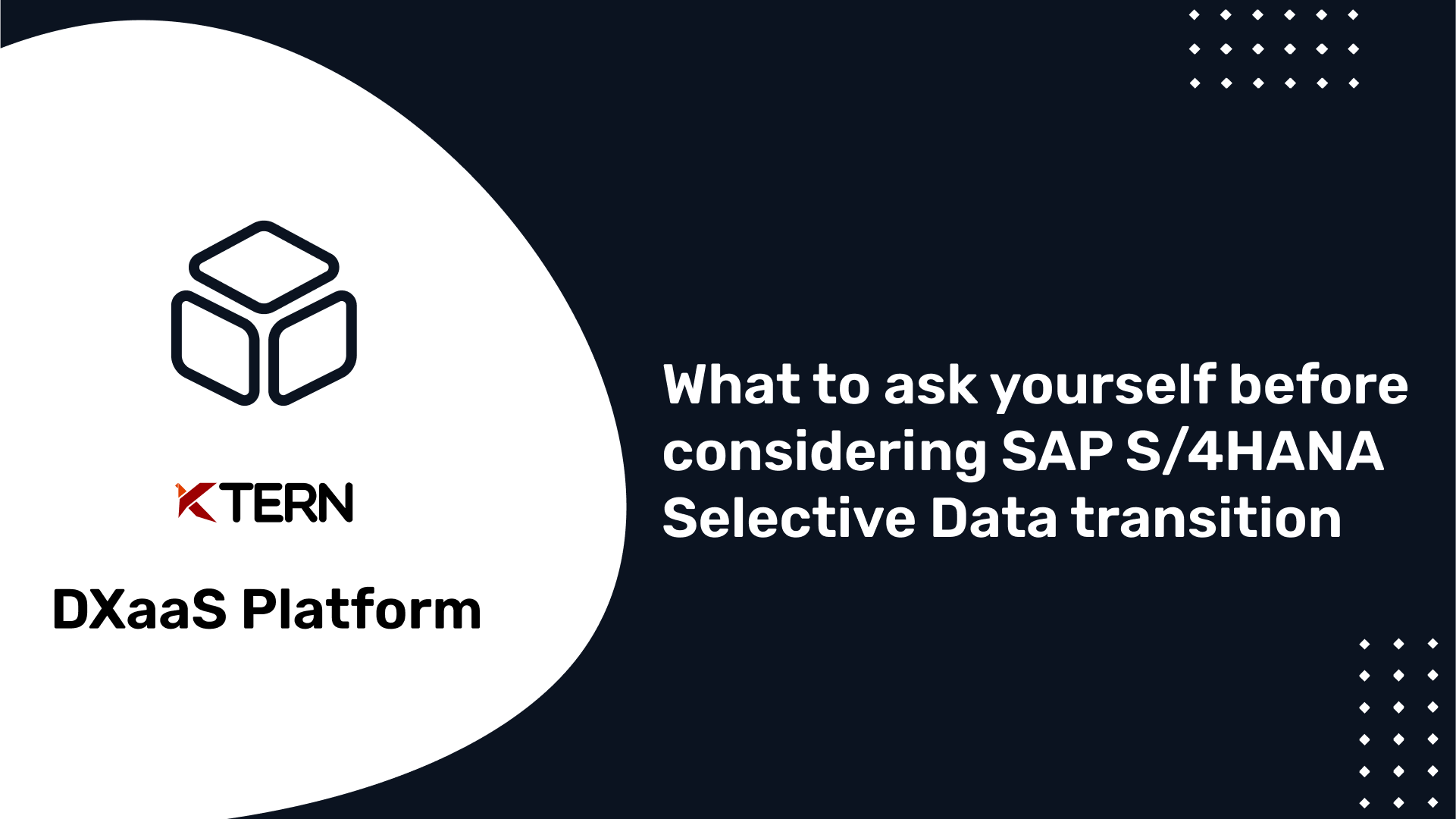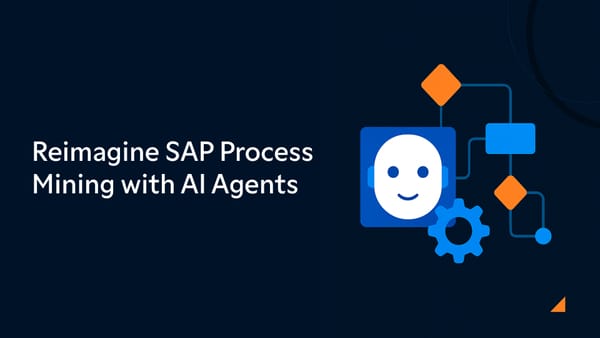What to ask yourself before considering SAP S/4HANA Selective Data transition
Today, SAP S/4HANA is helping companies around the world to become Intelligent Enterprises. For many customers, SAP S/4HANA transition programs start with a debate on how to approach the project and what options to consider.

Table of contents
- Approaches to migrate to S/4HANA
- What is Selective Data Transition?
- Scenarios that you can look at while moving to S/4HANA
- Historical Data: Understand What’s Fuel and What’s Ballast
- Conclusion
Approaches to migrate to S/4HANA
Typically, there are three different approaches to migrate to S/4HANA:
Approaches to migrate to S/4HANA |
|---|
| Greenfield Implementation |
| Brownfield Conversion |
| Selective Data Transitions |

We have discussed the standard options of greenfield implementation and brownfield conversion. From a technical viewpoint, a greenfield implementation means that the software is installed first, and then the data required to start business operations is loaded using the SAP S/4HANA migration cockpit. By contrast, with a brownfield conversion procedure, both the software and the data are converted in a single step.

What is Selective Data Transition?
Selective data transition is an umbrella term that refers to scenarios that go beyond the standard options of system conversion and greenfield implementation. It comprises a host of options that you need to evaluate carefully, as they often increase the project’s risk, effort, and complexity.
- Does your IT landscape have more than one ERP system? If so, do you intend to consolidate them?
- How do you build the target system? Through a new installation or a conversion?
- How will you migrate the data to the new system – and how much data must you migrate?
There are two major scenarios that you can look at while moving to S/4HANA.
Scenario 1: ERP Landscape Consolidation
One common situation is the consolidation of multiple SAP ERP systems into one. A standard transition path is either:
-
Implementing the new system based on best practices followed by loading master data and open items from all source systems
-
Converting one of the systems and loading open items from the others
If your requirement is to load historic data from all SAP ERP systems that are subject to consolidation, you will have to resort to a selective data transition and employ specialized tools and services. This pattern sometimes appears in the context of mergers and acquisitions, when an organization needs to integrate the SAP ERP system of an acquired entity into an SAP S/4HANA system.
Scenario 2: The Shell Approach
If the system is deemed to be in good shape, a project team may seek an approach on how to change only a part of the system configuration or functionality, while retaining the rest unaltered. Examples for such selective changes could be to restructure the chart of accounts or introduce the new general ledger (G/L) functionality with a ledger solution for parallel accounting.
Technically, such an approach includes these steps:
-
Performing a shell creation from the current SAP ERP
-
Performing corresponding customizing and configuration changes in this shell system for the simplification list items
-
Executing a standard system conversion of the shell system
-
Performing corresponding customizing and configuration changes in the SAP S/4HANA system to implement improvements and innovations
-
Loading the data
This approach is within the realms of standard as long as you load master data and open items using the SAP S/4HANA migration cockpit.
Historical Data: Understand What’s Fuel and What’s Ballast
Loading historic data into the new system entails an extra effort and use of specialized tools and services. Therefore, you should first evaluate if you can achieve the same outcome through a preparation project followed by a standard system conversion. The SAP Digital Business Services organization and SAP partners provide well-established services for such preparation projects, such as migration to the new G/L functionality, reorganization of the chart of accounts, or merge of controlling areas.

In selective data transition scenarios, the crucial debate is on how much historic data to retain. There is a wide range of arguments and different requirements. Like a race car driver, you need to understand when this data is fuel and when it’s ballast.
Here are three guiding questions:
1. What data do you really need to start your business operations?
You need to have absolute clarity about what business objects you need and why. You may find that you don’t actually need everything you thought you needed.
2. How well do you understand the mechanics of data migration?
SAP S/4HANA migration cockpit uses standard application logic to provision the data. Likewise, the Software Update Manager tool applies software vendor logic to convert the data in place during a system conversion. The tool to migrate the data from the source SAP ERP to SAP S/4HANA has to apply exactly the same logic. Note that this is always a project solution as there is no standard tool to migrate historic data. In complex scenarios, the data is migrated at database table level, which requires an exceptionally deep knowledge of both the data structures of and complex dependencies between the business objects of SAP ERP. Failing to understand these dependencies poses a high risk of data inconsistencies.
3. Would you rather spend the project’s budget on innovations or data migration
When migrating historic data, the extra cost comes not only from the specialized services you need to purchase, but also from extensive testing that is required for complex selective data transition scenarios, such as three end-to-end integration tests on migrated productive data.
There are options to consider before you decide to choose selective data transition:
-
Re-platforming your current ERP on low-cost hardware while granting business users read only access to it
-
Leveraging data retention solutions with inexpensive archive technologies that allow data retention for a fraction of the cost
Conclusion
Thus, the Selective Data Transition path is more complex than the traditional greenfield implementation or a brownfield conversion. You need to consider all the above scenarios and ask yourselves the above questions before making the decision.
The digital adoption platform, KTern.AI, is focused on ERP transformations with its ready-to-use automation features for project execution and business operations. Its auto-learning knowledge base engine S4HANAPEDIA.AI enables stakeholders with its intelligent insights across all phases of SAP Activate. It supports all the above scenarios – Greenfield implementation, system conversion, landscape consolidation and Selective data transition.
You can get in touch with us to learn more on how KTern can help you in each of the above scenarios and ease your transition to S/4HANA.



